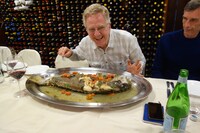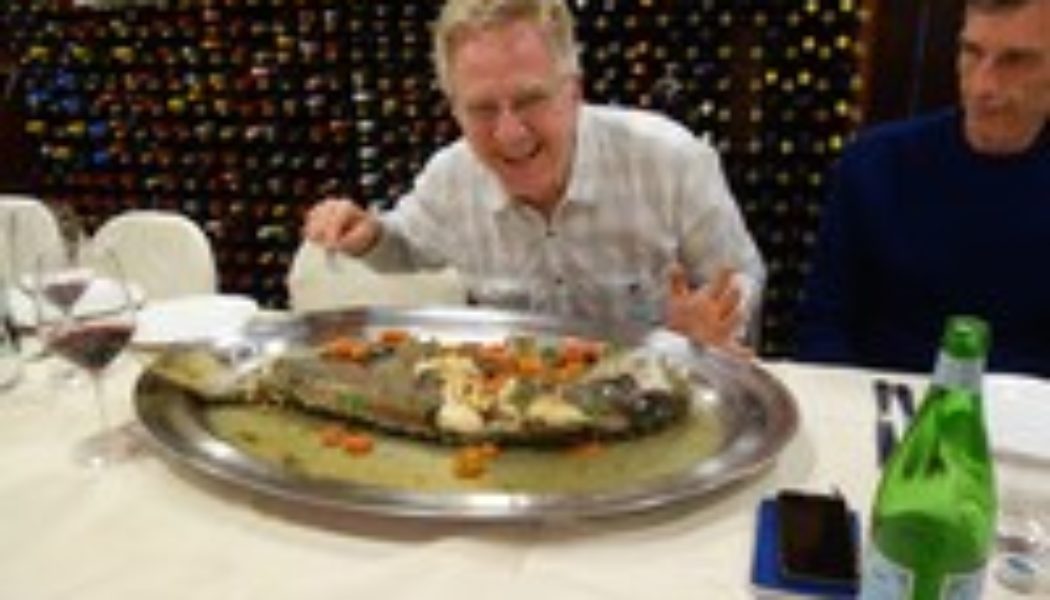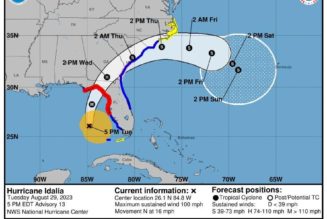
Our bookshelves are filling up with Italian vacation inspiration. This year, author Katie Parla debuted the “Food of the Italian Islands” cookbook that will tempt you to book a trip to Sardinia and Sicily, and Maria Pasquale released “The Eternal City” on Rome’s culinary traditions. Then the godfather of European travel, Rick Steves, published his first-ever food book, “Italy for Food Lovers.”
Part-travel guidebook, part-food encyclopedia, Steves’s latest dives into Italy’s eating and drinking culture by region. Steves partnered with longtime friend and author Fred Plotkin, who is a Cavaliere della Stella d’Italia (essentially Italy’s version of a knight) for his career educating people on Italian culture.
The book covers it all, like getting into the history of Italian wine, the intricacies of antipasti in Florence and the units of measurement you’ll need at a market. It also has an extensive glossary in the back so you don’t get nocino (walnut liqueur) and your nodino (knuckle) confused.
We talked to Steves about what he’s learned about Italian culinary culture through his lifetime of eating and drinking through Italy and gathered some key tips for your next trip.
Skip towering, bright-colored gelato
If you Google “gelato in Italy,” you’ll get images of heaping mounds of vibrant ice cream. But Steves says “over-the-top displays where you’ve got … colors you don’t find in nature with a literal cherry on top — that’s all wrong.”
The reason? “A good gelateria doesn’t want to have their gelato exposed to the air by being a mountain like that,” Steves said.
Instead, look for places away from tourist hot spots with modestly packed gelato with lids on them. “Look where the locals are going,” he added. “Most towns have a go-to gelateria for the locals.”
Steves also suggests learning some gelateria phrases to improve your experience. “It’s okay to ask for a taste,” he said. “So you want to have that word for ‘taste.’” Other words and phrases to memorize: ordering a cup or a cone, how many flavors you’d like and what flavors are seasonal or that the staff enjoys.
Never eat on a high-rent street
When that pang of hunger or thirst strikes, pause to assess your surroundings. Are you on a major thoroughfare? On the corner of a popular piazza? Keep walking. Steves’s rule of thumb is to steer clear of establishments on “high-rent streets” when choosing a place to eat, whether it’s gelato or dinner. The more expensive it is for the business to operate, the more likely you’ll be disappointed by the experience.
Hunt a few streets off the main drag, away from the big points of interest. Avoid places with big signs in English that advertise “we speak English” and “no frozen food” or places with preprinted menus in five languages.
“You want a small handwritten menu in one language,” Steves said. “Then you want to see that it’s got a boisterous local crowd. … If it feels good, go in and sit down.”
When in doubt, go regional and seasonal
If you don’t speak Italian, it can be intimidating to scan a menu board or crack open a wine list at a restaurant. There may be words you do know (like ragu and chianti) and exponentially more you don’t. The trick is not to get bogged down by the language barrier. Instead, Steves recommends asking your server for what’s good from nearby.
“In Italy, the passion is to eat with the season and eat what’s local,” Steves said. That goes for both your food order and drink order. Often, the best pairings come from dishes and drinks made from the same region. If a place is known for its pork, there’s a winemaker in the area that’s figured out the best balance of flavors to pair with it.
“It’s a celebration in Italy,” Steves said. “It’s more than just food; it’s a pride thing.”
You could also come prepared. “You should have a kind of hit list of things you want to try while you’re in [a particular] region,” Steves said. “You do polenta in the Veneto and you do pizza in Naples and you do wild boar in Umbria. … If you’re going to try wild boar, do it in places where they do it well.”
Order with a sense of adventure
After decades of hosting tour groups on excursions, Steves knows it’s easy for Americans to fall into habits when it comes to ordering food in Italy.
“I know from my experience as a tour guide, a lot of people go to Italy and all they get is spaghetti Bolognese, spaghetti Bolognese,” he said. “Always pizza, pizza, pizza, spaghetti Bolognese, tiramisu, tiramisu and house wine.”
Break the mold. You may have favorite dishes you’d like to revisit, but “have a little spirit of adventure,” Steves said, arguing that it’s important for travelers to branch out to get the most out of travel. You don’t have to order something that sounds unappetizing to you; rather Steves encourages asking for recommendations and to “try something that you’ve never thought about before.”
“I had zucchini flower pizza the last time I was in Venice, and it was really the best pizza I had in my whole trip,” he said. “It looked like a big bouquet of zucchini flowers on the pizza, and it was wonderful.”
He added: “And I wouldn’t have ordered it had I not asked the waiter what would be a memorable, special thing to order today.”
Eat with strangers
One of Steves’s best tips for dining in Italy has nothing to do with the food, but the company (and it applies no matter where you’re traveling). “When I’m on the road, it’s nice to freshen up the conversation by finding an excuse to eat with new people,” he said.
This isn’t a slight against your travel partner or group. Even if you love sharing meals with them, “it’s the same person over and over and over again,” Steves said. “You’ll both have a more fun conversation if you just team up with a couple of other travelers, or some locals you’ve met, or get to know the people at the next table.”









